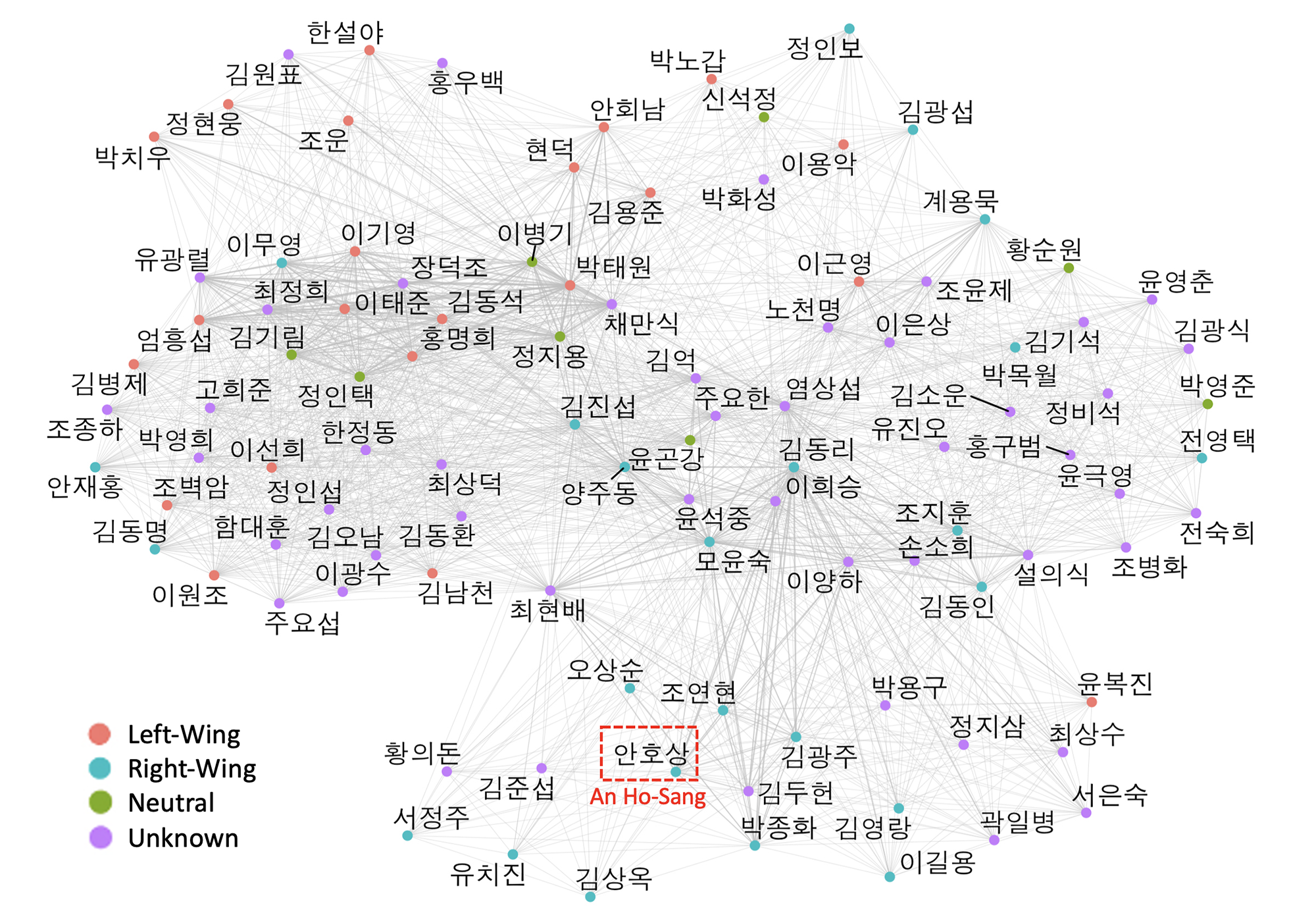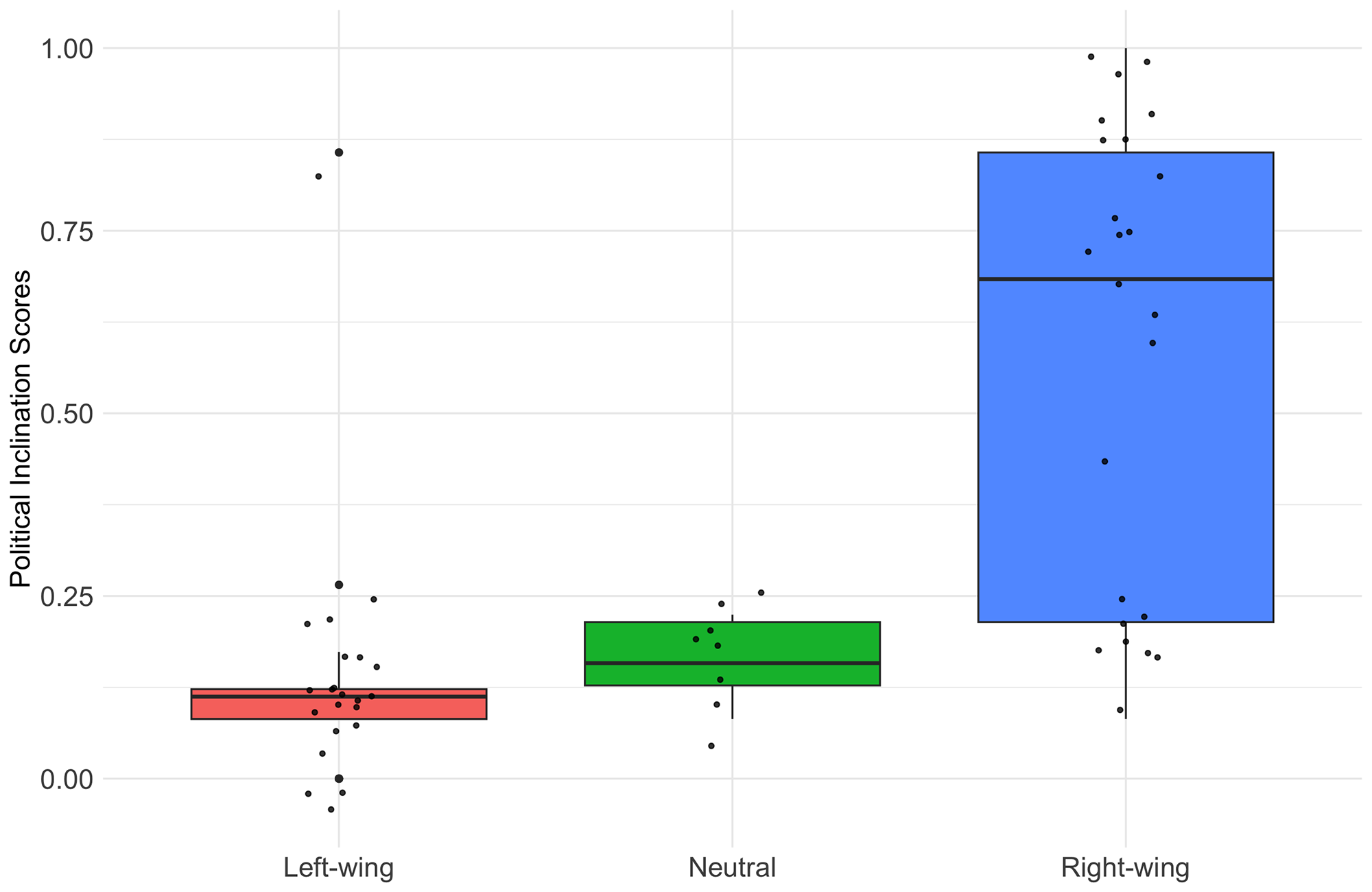
The years from 1945 to 1953 were a period of intense political upheaval in modern Korean history. With the end of World War II in 1945, Korea restored their sovereignty from Japanese colonial rule and was briefly governed by the U.S. military. In 1948, excluding the northern regions, elections led to the establishment of a government solely for South Korea. Then, the Korean War lasted from 1950 to 1953, after which an armistice led to Korea's division. During this period, South Korean society rapidly embraced right-wing ideologies, aligning with the anti-communist sentiment prevalent during the Cold War era. As the separate government was established and the war ensued, some individuals voluntarily or involuntarily went to the North, and those remaining in the South developed and sought to reaffirm beliefs in the legitimacy and ideological superiority of South Korea.
Many studies reported that the rightward shift in South Korean society between 1945 and 1953 is clearly reflected in the language textbooks published at the time (Kang, 2007; Heo, 2013). After liberation in 1945, both leftist and rightist authors contributed to textbooks. After the establishment of the South Korean government in 1948, articles by leftist authors began to disappear from the textbooks, while those by rightist authors significantly increased (Kang, 2007; Park, 2013). This is because South Korea was facing the urgent task of managing the chaos resulting from the decolonization and division processes and integrating society. Textbooks were recognized and utilized as suitable media for this task, as their content was universally accepted and widely distributed among students (Park, 2019: 57-58). The then Minister of Education, An Ho-Sang, focused the objectives of education policy on 'promoting patriotic unity' and 'eradicating communism,' actively employing right-wing writers. Despite opposition, he also established the 'Student Defense Corps,' and emphasized through editorials in the textbooks that students should sacrifice and dedicate themselves to the country (Kang, 2007: 160-163; Park, 2012: 105-112).
Prior studies on this topic have mainly used qualitative methods using key textbooks. While some textbooks have been studied comprehensively, a broader overview of all language textbooks, including many that have not received much attention, has been lacking in the literature, leaving the following questions unresolved:
RQ : Given that the political inclinations of many textbook contributors are unknown, how can we examine the political shift in language textbooks and their distribution between 1945 and 1953?
This study adopts network modeling methodologies to examine the political inclinations in Korean middle school language textbooks from 1945 to 1953. This study targets 82 textbooks, where 37 of which from the U.S. military government period (1945-1948), 30 of which from the South Korean government establishment period (1948-1950), and 15 of which from the wartime period (1950-1953). Literature textbooks are excluded from this study due to their inherent nature of containing more writings by contemporary authors. We curated the textbook data by combining the list of past textbooks covered in previous studies (Oh, 2009; Park, 2012; Heo, 2013) and additional books we directly found from the National Library of Korea (https://nl.go.kr) and the National Museum of Korea (https://emuseum.go.kr).
Understanding the political leanings of textbooks presents two methodological challenges. First, the political leanings of many contributors are unknown—approximately 40-50%—complicating the quantification of a textbook’s overall political leaning. Second, quantifying the political inclination of textbooks based solely on the proportion of contributors is less accurate, because calculating it using the ratio of right-wing to left-wing contributors may yield scores sensitive to the number of contributors (i.e., the fewer the contributors, the lower the accuracy). Additionally, a person’s political inclination is often on a continuum, rather than being binary, which makes it difficult to quantify a score for each textbook.
We address these issues through a network modeling strategy. Assuming that contributors to a textbook are more likely to invite others who share similar political views, we initially create a network of contributors based on their co-occurrences in textbooks. An edge between two contributors means they appear in the same textbook, with the weight of the edge corresponding to the number of co-occurrences. Each contributor is then represented as a vector of co-occurrences with all other individuals. We calculate the distance between two contributors based on the inversed cosine similarity between their vectors. These pairwise distances form the basis for calculating political inclination scores. We establish An Ho-Sang as the baseline right-wing individual (so we set his political leaning score as 1), acknowledging his status as a well-known far-right-wing author with political influence (Lee, 2005). Other contributors’ political leaning scores are calculated by subtracting their inversed cosine similarity values from 1. Finally, we standardize the scores, so they range from 0 to 1.
To provide an initial assessment of this approach, we constructed a contributor co-occurrence network using six sample textbooks published between 1947 and 1952 (Figure 1). To validate this method, we compared the resulting scores against the known political leanings (left-wing, right-wing, or neutral) that were manually assigned (“unknowns” are removed in the validation). Figure 2 presents boxplots that compare known political leanings with the calculated scores. Their differences are statistically significant, as determined by ANOVA (F[2, 51] = 21.96, p < 0.001), confirming the method's validity. However, there are outliers, such as a few left-wing individuals with high scores, which may be attributable to (1) the limited number of textbooks used for network modeling, and (2) the use of only one individual as the reference point for scoring. In future research, we will refine our approach by incorporating all 82 textbooks and by testing with different reference individuals to calculate the scores.
By doing so, all scores for unknown individuals will be updated. The political leanings of textbooks can be determined by taking the weighted average of contributors' political leaning scores. The findings will contribute to our understanding of the general characteristics and changes of textbooks from different subjects and eras over time. Since the Korean War, Korea's deep-rooted anti-communism and high educational zeal have made examining textbook content an effective way to understand its society.

Figure 1. Contributors’ co-occurrence network constructed based on 6 sample textbooks in 1945-1953. “An Ho-Sang” in the red dashed rectangle is the baseline right-wing contributor with the political leaning score of 1.

Figure 2. Distribution of political inclination scores across the manually tagged political leanings. ANOVA confirms its systematic variations (F[2,51]=21.96, p<0.001).